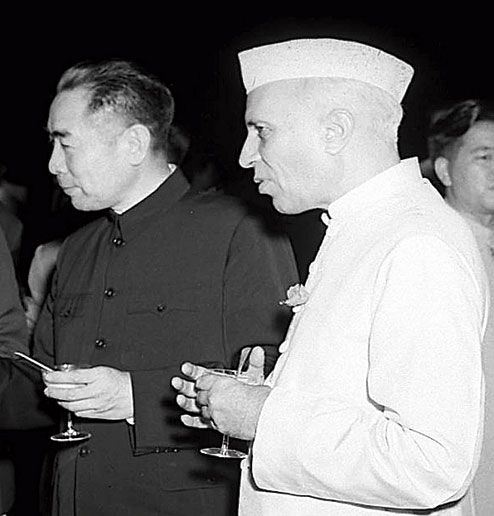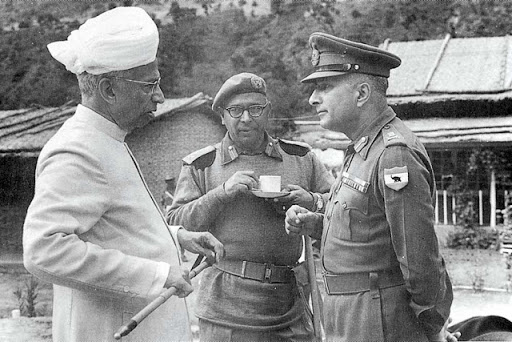Death Anniversary of Nehru: Missed Opportunity for Border Solution in 1960

Introduction
Jawaharlal Nehru was India's prime minister for the first 17 years. His entire political experience consisted of dealings with the British political leaders and leaders of the Muslim league. He had little grounding of global strategic policy and potency of military power. On both these accounts he failed badly and by 1959 had realized the fallacy of his policies. By that time much water has flown down the river and the Chinese had become distrustful of Nehru.
It is a known fact that the failure of Nehru to set up any administration in Aksai Chin or any military representation there resulted in that entire area of almost 30,000 mi.² being occupied by China. These facts came to the knowledge of Nehru in 1955 but there was nothing that he could do and all he did was to suppress the information from the Indian public. He feared he would be ridiculed for his inaction.
The cat, however, came out of the bag when in 1959 an Indian patrol consisting of 50 Central Reserve Police soldiers on patrol duty in Ladakh at Daulet Beg Oldie was ambushed by the Chinese, and 10 CRPF soldiers were killed.
This was a shock to the Indian nation and Nehru was in the dock. His critics pointed to his inaction when the Chinese had occupied Tibet in 1950 and also Aksai Chin. Nehru tried to reverse his policy but at the same time, he forgot the axiom that any change in foreign policy on the border with China must be matched by military strength. He failed on this account and the Indian Army continued to use Lee Enfield .303 rifles which were used during World War I.In addition no significant number of troops were deputed to man the border with China.
China at that time was itself undergoing a metamorphosis. The Soviet advisers and technicians helping China had all been withdrawn by Nikita Khrushchev in 1959 because of a serious ideological rift between the two. China was also fearing an invasion from Taiwan with American help. A border problem had erupted with the Soviet Union and there had been clashes between Soviet and Chinese troops on the Russian- Chinese border.
In such a situation the Chinese central committee of the Communist Party was keen for an adjustment with India. This was the golden opportunity for India to have solved the border issue but unfortunately, Nehru was not equal to the task. Recently the Indian foreign secretary who has just retired Ms. Nirupama has commented that the 1960 proposal of the Chinese is like a dream and can never be repeated. We shall now see what that proposal was.

Nehru's failure
In mid-1960 the Chinese prime minister Chou En-Lai visited Delhi. Relations at that time between India and China were at a low ebb. The opposition was building up hysteria against China. In addition in Nehru's cabinet, there were some ministers who were opposed to him and they wanted to queer the pitch. Notable opponents were Morarji Desai who was the finance minister and Govind Ballabh Pant who was the Home Minister.
Chou En-Lai landed in Delhi to a cold reception. Earlier Nehru had a good equation with him as he had introduced him to the non-aligned conference of nations at Bandung in 1955.This time the bonhomie was missing.
The Chinese Prime Minister had however brought some very significant proposals to settle the border dispute with India. These proposals were put forward because China was itself feeling under pressure. Chou-en-Lai in his meetings with Nehru proposed recognition of the eastern border and negotiation to demarcate on the basis of the line of actual control in the west. He also proposed giving up all claims of China to North-East Frontier Agency now called Arunachal Pradesh and demarcation of the border on the basis of the MacMohan Line- the border laid out by the British in the Simla pact of 1913.
As a quid pro quo, he proposed that India recognize Aksai Chin as a part of China and the line of actual control be converted to an international border. Now we can see that these were very realistic proposals given the weakness of the Indian military.
Nehru and his defence Minister Krishna Menon were inclined to accept the Chinese proposal. President Dr. Radhakrishnan and the chief of the Army General Thimayya were also in agreement to accept the proposal. But in the cabinet meeting, there was no unanimity about it and in another meeting with Chou, Nehru suggested that he should meet Morarji Desai and Govind Ballabh Pant and present his proposal to them.
This was a complete dereliction of responsibility by Nehru and it is not understood how he suggested to the Chinese prime minister to meet the finance minister and the home minister to discuss approval of the proposals.
As China was keen for a settlement Chou agreed with Nehru for the meetings. He had his first meeting with Morarji Desai and by all accounts, it was a disaster. Morarji Desai was not ready to accept Aksai Chin as a part of China though he knew that militarily India could never occupy that area. But his entire political career Morarji had been a strong opponent of the Nehru family and this was his way of getting back on to Nehru.
Chou en Lai next met Govind Vallabh Pant. It was an icy meeting as Pant began to talk of the liberation of Tibet. He failed to accept the position that Tibet had been under occupation of China for 10 years and the Indian Army had done nothing when the Chinese army had attacked Tibet in 1950. At that time no senior leader of the government had proposed an Indian intervention in Tibet. The home minister also raised the question of the Tibetan government in exile and this irritated the Chinese Prime Minister no end.
An irritated and exasperated Chou met Nehru for the last time and requested him to exert himself. At the same time, he went away an extremely angry man.

Legacy: perpetual conflict
Chou went back to China and briefed Mao-Tse-Tung and other leaders of the Central Committee of the Communist party. They reached a consensus that India did not want the border to be settled and was playing the American game. Mao and Chou could not countenance why a good proposal which accepted reality and the de facto position on the border was not accepted by India.
At that fateful meeting of the Central Committee of the Communist Party, a decision was taken that India needed to be taught a lesson by military force. The Chinese were however a little unsure of the reaction of the United States to a Chinese attack on India. They waited for an opportune time and when in 1962 October, the Russians and Americans were involved in the Cuban missile crisis the Chinese army mounted an attack on India. The Americans tied up in the Cuban crisis could not react to the Chinese attack and the Indian army unprepared was decisively defeated.
The issue that must be highlighted is that had Pandit Nehru accepted Chou's proposal at that time and the border demarcated all the problems that India and China are now having on the border in Ladakh and NEFA would not have taken place. As things stand China claims the entire Arunachal Pradesh in the east and does not recognize the Mac Mohan line which it feels is a hangover of imperialism. It has already incorporated Aksai Chin as a part of Tibet and India has been declared Persona Non-Grata in the Tibetan region. China now holds the upper hand.
It is worth mentioning that the Chinese at about the same time made some proposals for the settlement of the border with Russia and Nikita Khrushchev the Soviet leader accepted and the border between the two nations is now settled.
It is a matter of regret that Pandit Jawaharlal Nehru at that time failed to make a decision and tried to pass the buck to Morarji Desai and Govind Ballabh Pant. They in any case had no Locus Standi to discuss anything with the Chinese Prime Minister.
China in 1960, was weak but now it is a global power both militarily and economically. Nehru's folly is now like an anchor around the necks of the Indian leadership.








